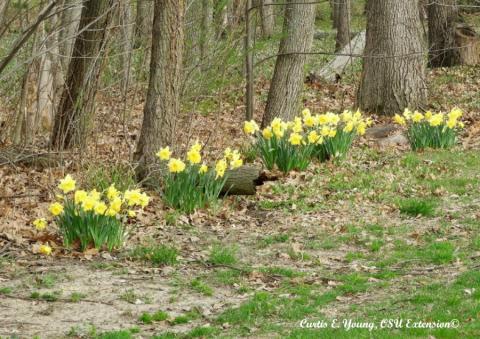Old home site in Big Ridge Park
The land that is now Big Ridge State Park was once an area filled with small family farms. It is hard to picture what the landscape might have looked like a hundred years ago. The wooded forest hides most of the evidence. No structures were left standing after the TVA first acquired the land. The TVA’s first attempt to make a natural area of Big Ridge was to remove all the barns, sheds, homes and any other structure that was not part of the natural environment.
Looking for and recognizing the subtle evidence of an old home site is like treasure hunting. It’s rewarding to find spots that a home once was located.
This is the best time of year to spot these areas. The spring foliage has not yet taken off, which gives the most unimpeded view into the forest, allowing hikers to spot these old home sites better from the trails.
Now remember that the park is protected, including the cultural relics still on the land that belong to all of us. Taking or disturbing these sites are stealing the experiences for others.
With that being said, most of the home sites are located just off the trail and it’s okay to wander just a few feet from the trail to check these areas out if you would like, but please don’t wander too far.
Staying on the trails is a park rule for two reasons. The first being that folks don’t get lost — that's a story for another time. The second is that the impact from the foot traffic on the natural environment is kept at a minimum.
Daffodils are starting to sprout up and will be blooming soon. These flowers are a very hardy plant that comes back every year and starts to bloom at the late part of winter/early spring. These flowers don’t spread very well naturally and because of this, daffodils make a great source of evidence for old home sites.
Folks would add these beautiful flowers to their yard for some color by digging up the bulbs and planting them around their homes. Daffodils, or as some folks call jonquils, will continue to grow in the same spots that these farmers planted them year after year long after the home has gone and the forest claims the land.
Sometimes all the different pieces of evidence come together and you can really start to see the outline of an old home site. Rocks that made the foundation? Pile of rock that was once the chimney? Maybe the stone steps that once lead to the front door? How about that sudden small dip in the earth, maybe the root cellar? All these things together almost certainly are the remnants of an old home site.
Some other plants that are a telltale sign of an old homestead are yuccas and periwinkle. The yucca and periwinkle plants stay green all year long which helps when looking for these sites in late winter.
I hope you enjoy hiking the park — whatever you plan to look for or enjoy while hiking. Please remember to take care and be respectful of the park and its resources. Be safe while hiking and if you have any questions feel free to contact me, Ranger Derek Wilson, by phone at (865)206-9459 or by email at derek.wilson@tn.gov.
- Log in to post comments
